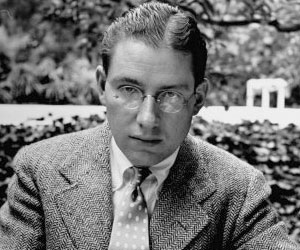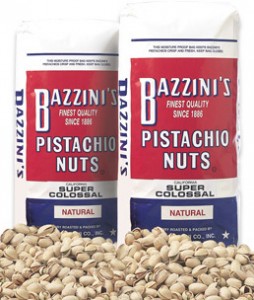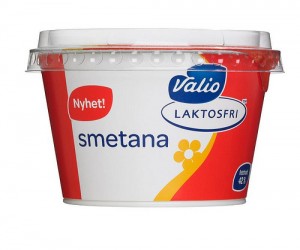November 6th, 2011 § § permalink
The master of light verse, Ogden Nash, summed up his feelings about HG’s home borough in a two word couplet: “The Bronx. No Thonx.”
Obviously, the poet had not sipped, supped and dined in The Bronx during its golden food days (which lasted into the early 60’s). Every east-west shopping street (Kingsbridge Road, Fordham Road, Mt. Eden Avenue, Burnside Avenue, etc.) was dotted with great Jewish delicatessens and bakeries, Italian fruit stands (very fresh produce from Long Island and New Jersey truck farmers); purveyors of superior smoked salmon and sturgeon (these were known as “appetizing stores”). Arthur Avenue in the Belmont section was the center of Italian cuisine. Tremont Avenue and Bathgate Avenue catered to Jewish tastes. The Irish population of The Bronx was not renowned for cuisine but ran many estimable taverns on Jerome Avenue. Well, times changed and by the 70s the Bronx became a symbol of urban decay and hopelessness.
But, don’t count the borough out. Tremont Avenue and Bathgate Avenue have changed or been obliterated. But, Arthur Avenue has expanded and retained its vitality (it is a must for every foodie visitor to New York). There are a lot of very good Puerto Rican restaurants in operation. Good African restaurants have opened on the Grand Concourse. SJ vouches for the Jamaican food on White Plains Avenue and Gun Hill Road. There’s both traditional Jewish delicatessen food in Riverdale and the world’s greatest carrot cake. Obviously, the ethnicities have changed but there’s still some sizzling tastes to sample in The Bronx. And, let’s hope the championship flags will be flying again soon at the new Yankee Stadium.

September 13th, 2011 § § permalink
Why was New York’s Jewish population so fond of Chinese food? It was a Sunday night tradition to eat (in the ignorant parlance of the times) at the “Chinks.” When HG was growing up Moms cooked family dinners throughout the week and the whole family was present at these meals. Sunday was a vacation day for Mom. Therefore the journey to the “Chinks” and the joyful gastronomic mix and match game of putting together (from rows A & B, which were what how most Chinese menus at the time were organized) a fine “combination platter.”
The HG family bypassed Sunday Chinese cuisine for platters of corned beef, pastrami, cole slaw, potato salad and sour pickles from the neighborhood delicatessen (the HG family favored the Tower Delicatessen on Kingsbridge Road in The Bronx). Following that meal there was tea and pastries with family friends and vigorous games of pinochle. The Sunday-Vacation-Day-For-Mom theme was set by obligatory listening to the Sunday morning Horn & Hardart Children’s Hour which consisted of music (instrumental and vocal) from gifted kiddies. Horn & Hardart (renowned for its Automats) was promoting its take-out stores. The program’s theme song was: ” Less Work For Mother, She’ll Understand.”
Now, none of this actually explains the original question of why New York Jews loved (and still love!) Chinese food. For a searching analysis, HG turned to perceptive SJ. Here’s what SJ has to say on this cross cultural subject: SJ cannot definitively answer such a weighty and complex question. But, it is worthy of intellectual speculation. SJ suspects that it had something to do with immigrant Jews (who were trying desperately to fit into their new American homeland) feeling a sense of ease while dining in establishments where the Chinese staff was, if anything, more foreign then them; and furthermore, a staff who saw no difference between Jewish customers and any other customer — which could not be said for many restaurants of the time. Plus it was cheap, salty and delicious. The fact that linchpins of Chinese cuisine were un-kosher pork and shrimp, was blithely ignored.
April 3rd, 2011 § § permalink
Last Christmas, thoughtful SJ gifted HG with a big sack of Bazzini pistachios, Big, plump, fresh, not too heavily salted nuts. Indeed, Bazzini reigns over the pistachio kingdom.
HG has always loved pistachios. As a wee lad, he would purchase them at the famed candy and ice cream emporium, J.S. Krum, which was located on The Bronx’s Grand Concourse (and Promenade). HG loves all pistachio-studded Turkish and Greek desserts. HG loves mortadella, the Italian forcemeat that is dotted with pistachios (the best mortadella is found in Bologna, a city of hearty cuisine). A bowl of pistachios, fruit, cheese, red wine (or port) makes a nice dinner finale. Curiously, HG has never encountered good pistachio ice cream. It usually tastes like green food coloring and sub-par vanilla. It’s a puzzle, because it should be good, as good at least as Butter Pecan or Vanilla Swiss Almond and it just isn’t. So, get to work, ice cream R & D guys. The world needs superior pistachio ice cream.
March 20th, 2011 § § permalink
HG is a devoted fan of that wonderful writer, Ian Frazier. HG is currently engrossed in Frazier’s “Travels in Siberia.” There is a direct link between Frazier’s diet on his Siberian voyage and HG’s diet as a youngster in The Bronx. The staple Siberian food is cottage cheese and smetana (sour cream) which Frasier ate at least twice a day during his rugged travels. Little HG also had a robust ration of smetana daily. Sour cream was always called “smetana” in the HG household, a reminder of HG’s Russian ancestry. HG had smetana with boiled potatoes. Smetana with borscht. Smetana with schav (cold sorrel soup, a summer treat). Smetana with cottage cheese, pot cheese, farmer cheese. Smetana with herring. Smetana with kasha. Smetana with chopped scallions and radishes. Smetana with every variety of fruit. The little guy ingested an awful lot of smetana.
This sour cream wasn’t the pallid stuff you find in supermarket containers these days. Bronx smetana was a local product, bought at local stores where butter didn’t come in packages but was cut from a giant tub. The closest you can get to Bronx smetana is Greek yogurt. Happily, it’s easily available. Followers of HG may note that HG adds Greek yogurt to many dishes. Childhood food comforts live forever.


